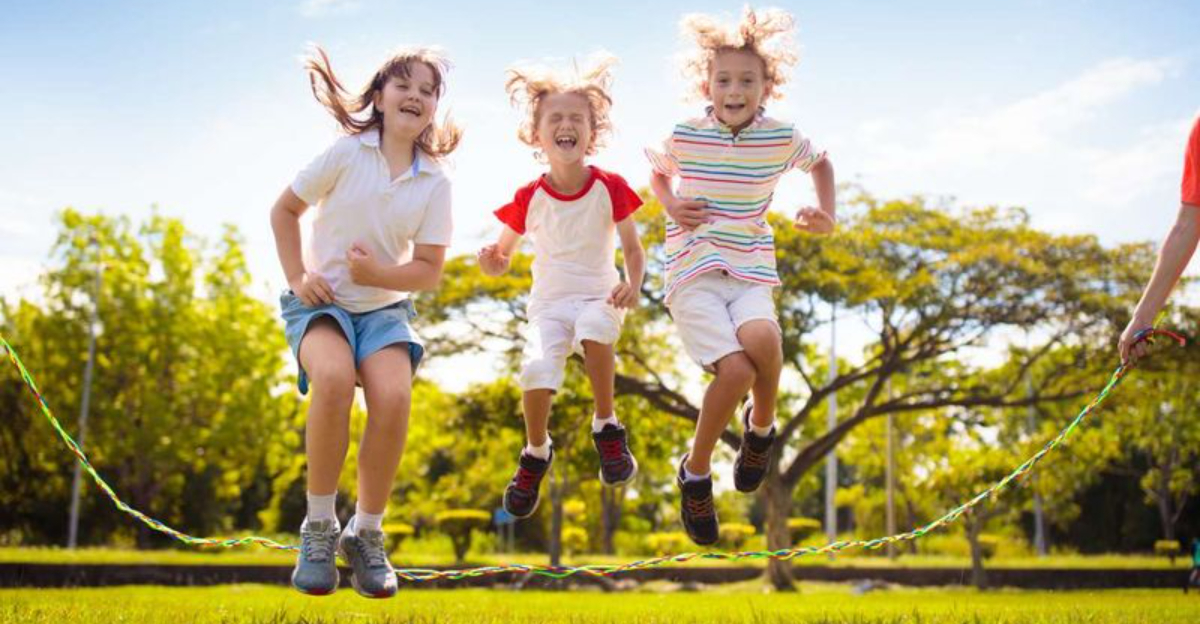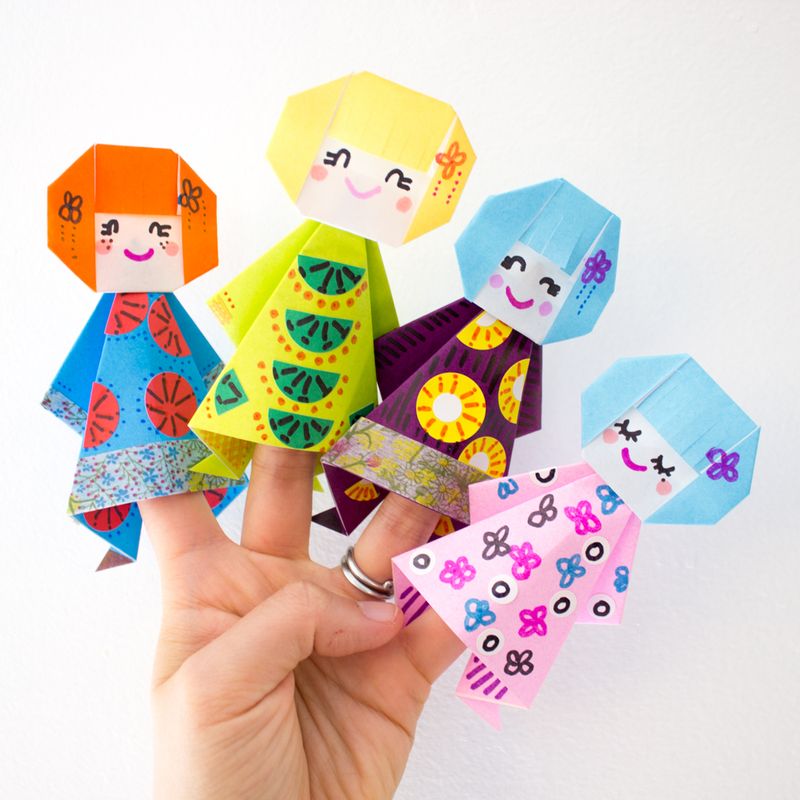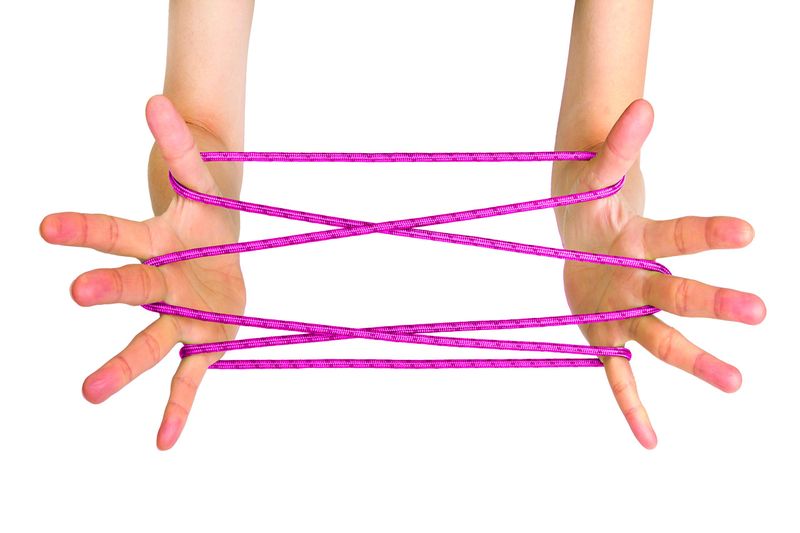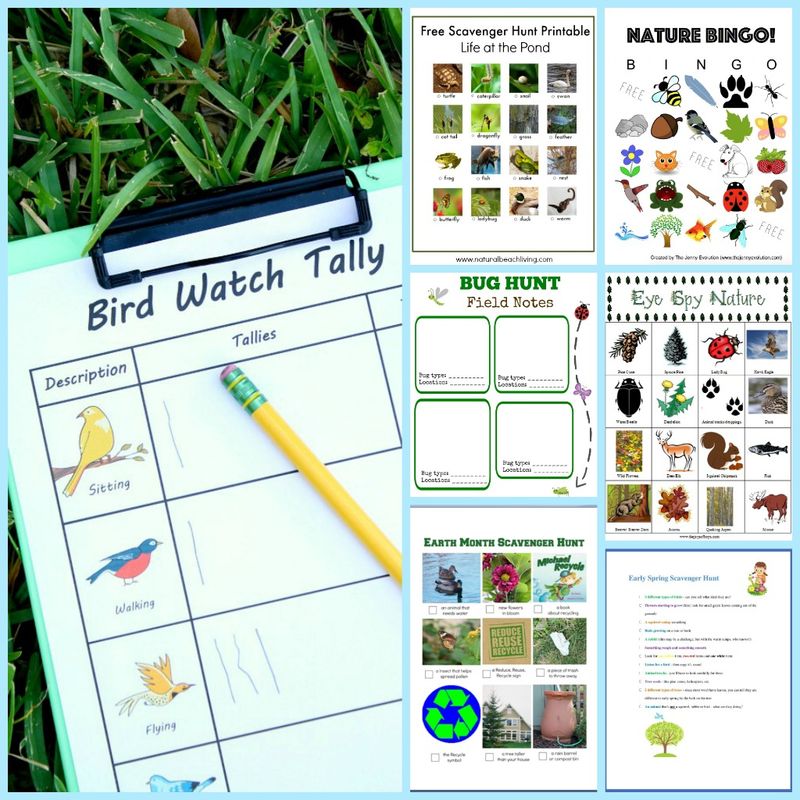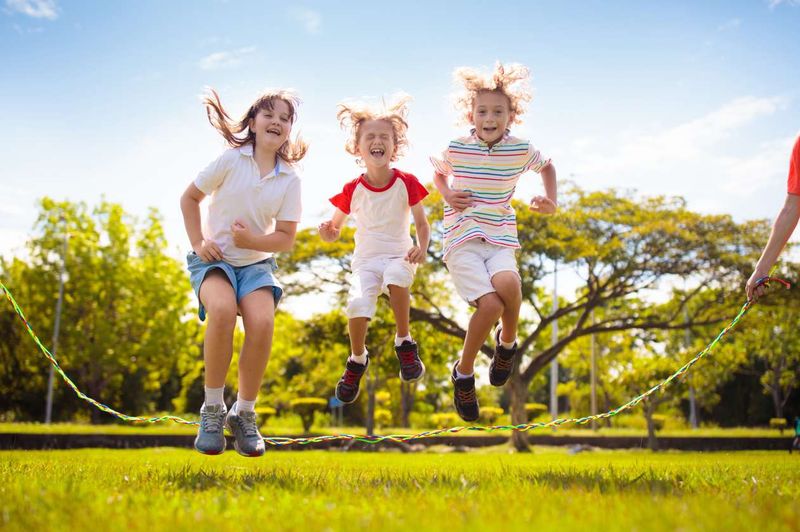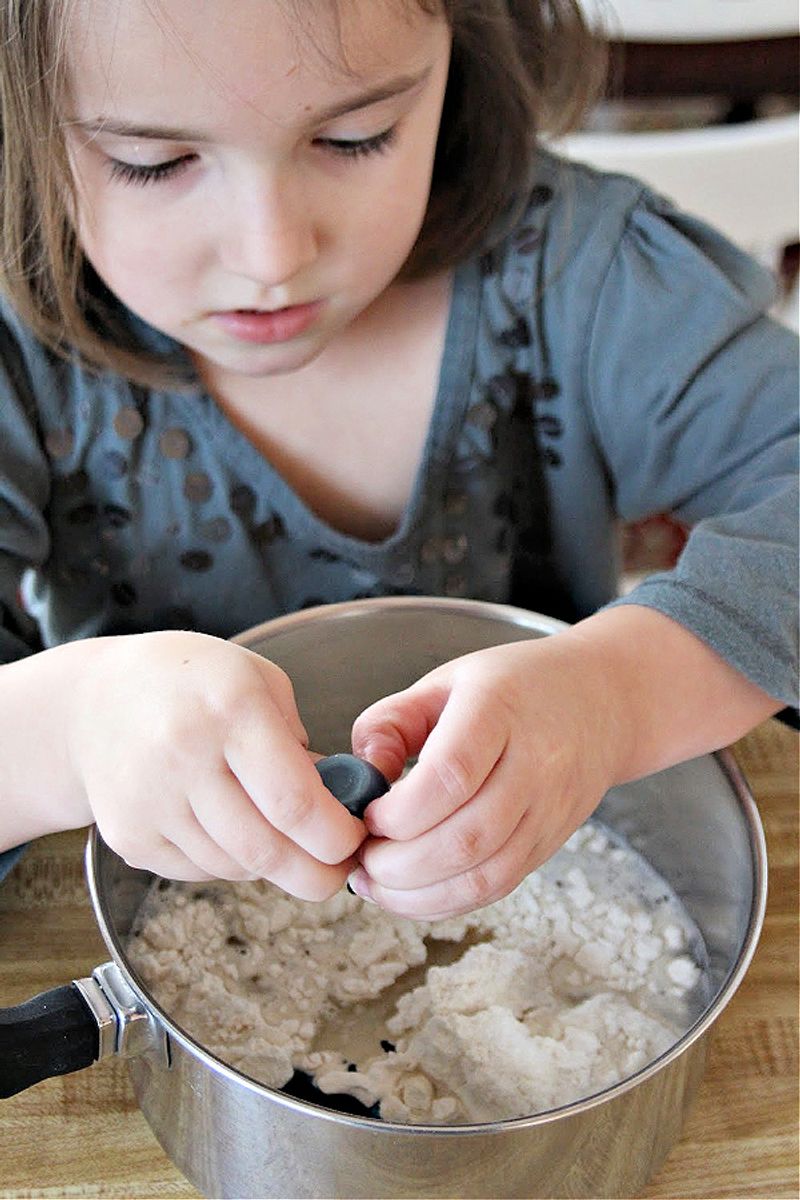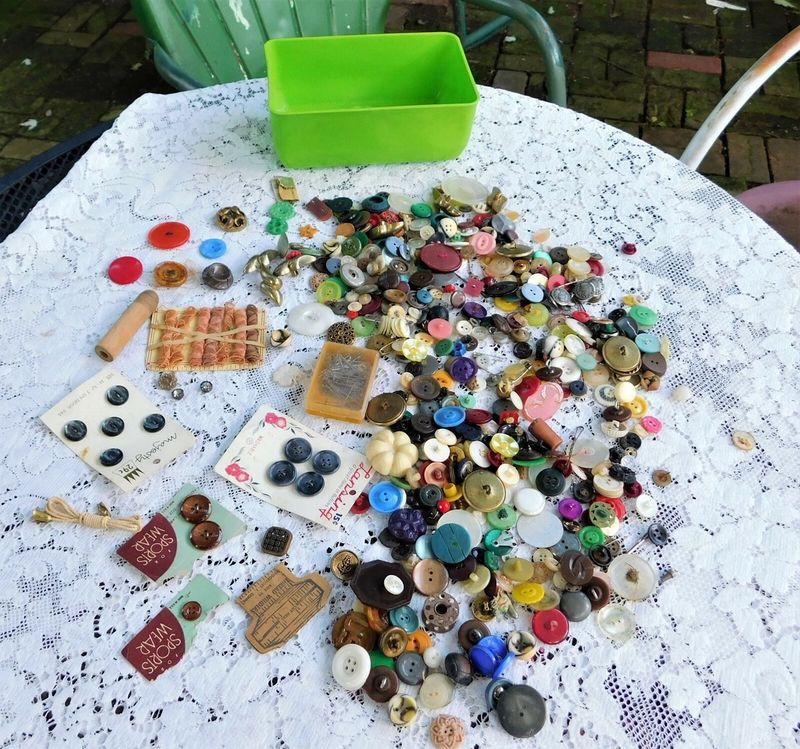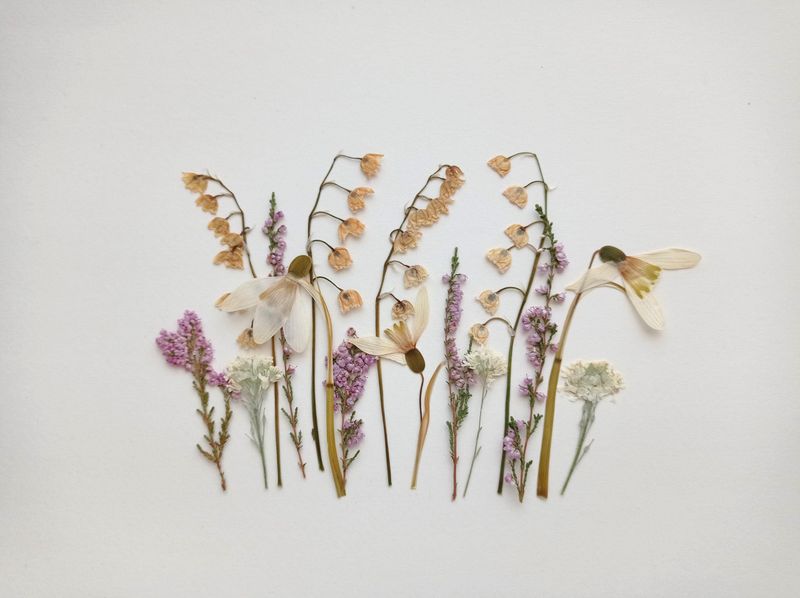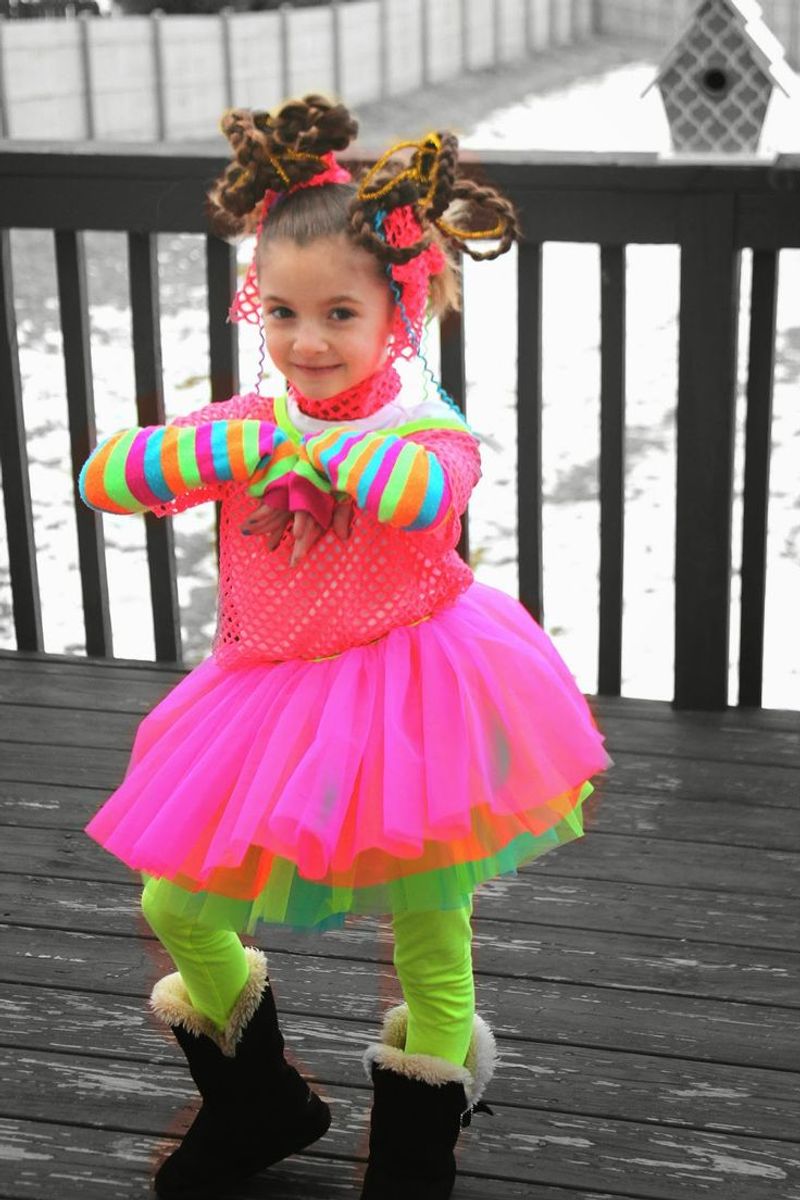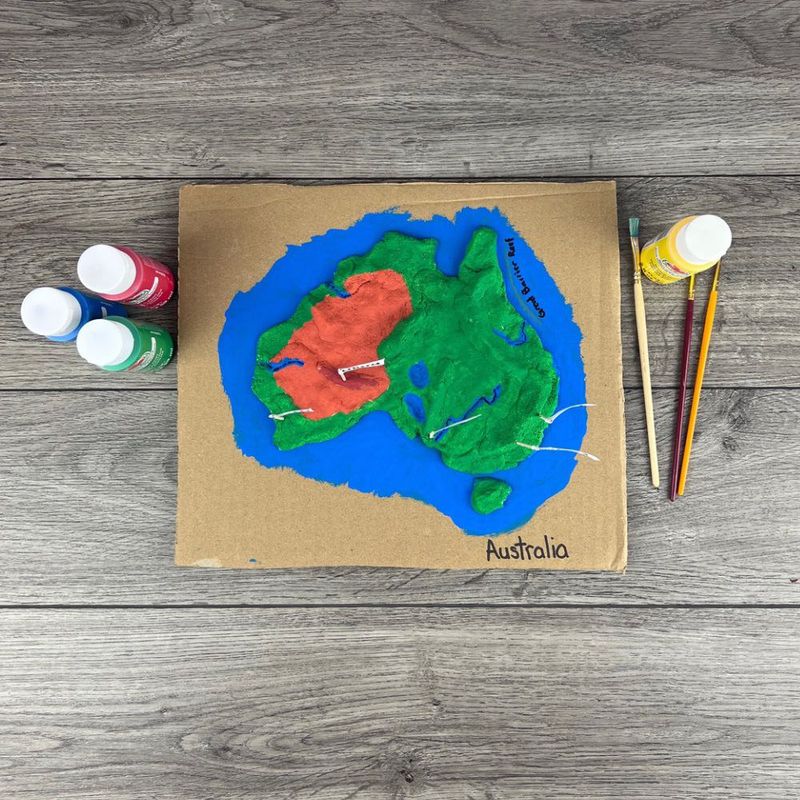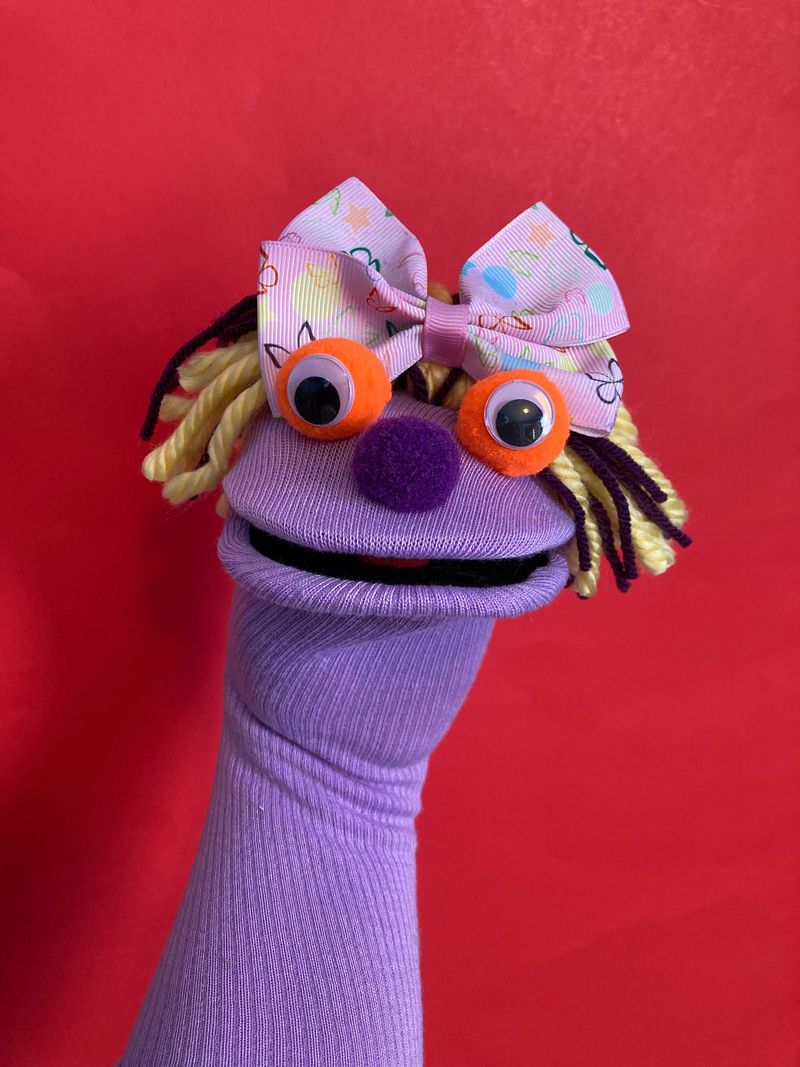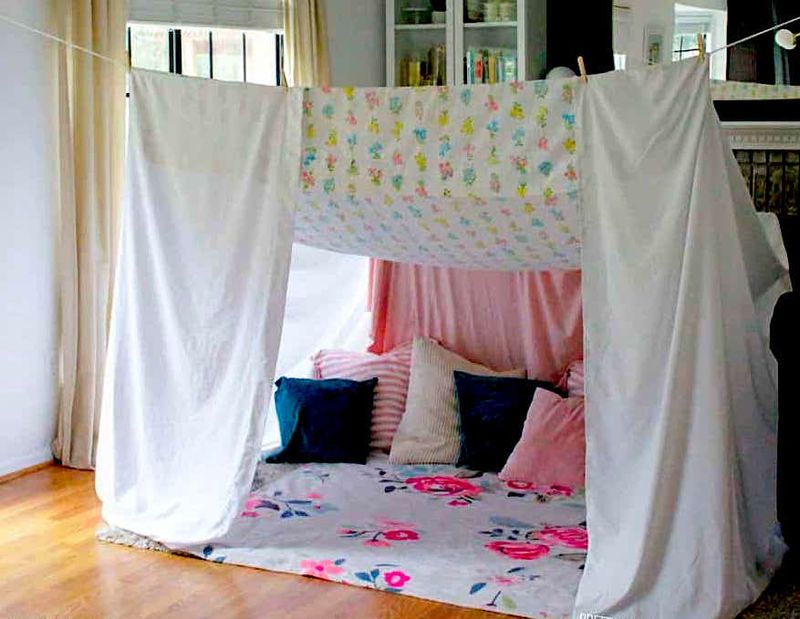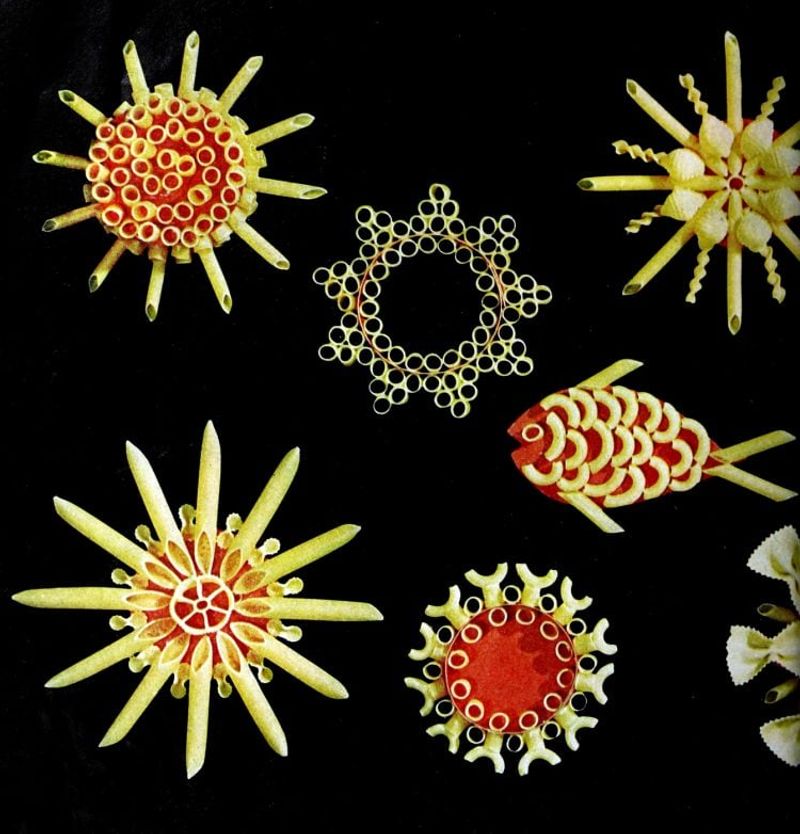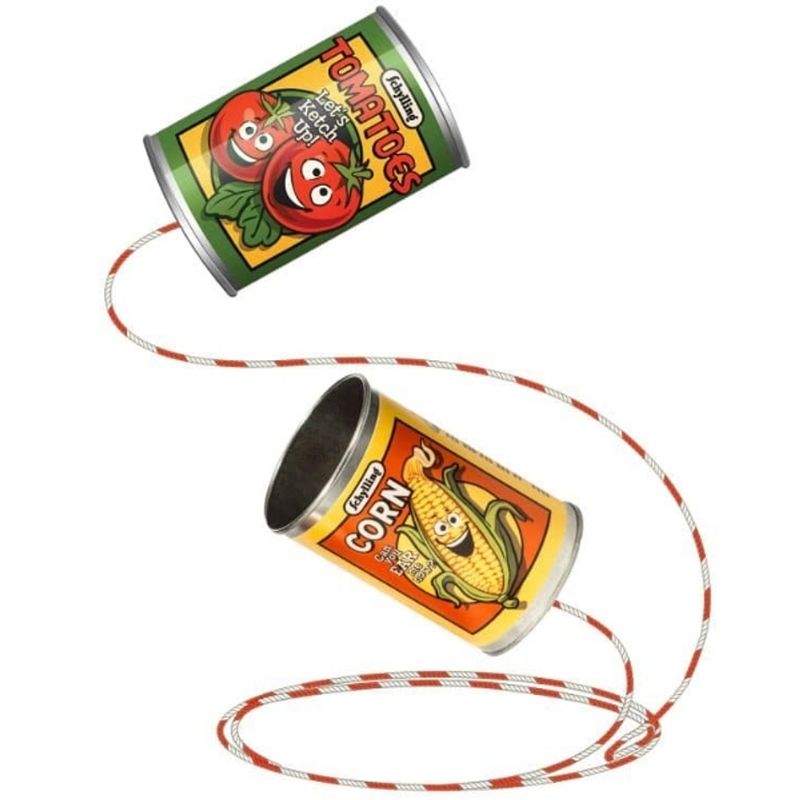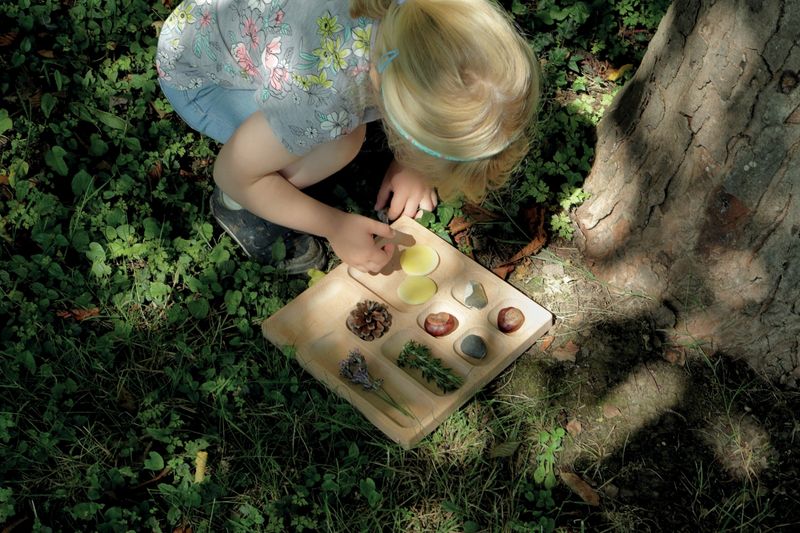Remember when childhood wasn’t filled with tablets, smartphones, and endless streaming options? Back then, moms were the original entertainment directors, armed with creativity and household supplies instead of charging cables. They turned ordinary afternoons into adventures and rainy days into craft workshops. These ingenious activities not only kept us busy but built skills and memories that have lasted far longer than any battery charge.
1. Crafting Paper Dolls
Magazines and catalogs transformed into fashion wonderlands with just a pair of scissors and some imagination. Moms showed us how to carefully cut around the outline of models, leaving those little tabs that would fold over the dolls’ shoulders.
Creating wardrobes became an artistic pursuit. We’d spend hours designing tiny outfits from colorful paper scraps, adding details with markers and glitter. Some ambitious projects even included paper furniture and pets.
This activity taught patience and precision while nurturing creativity. Many fashion designers today credit their early paper doll collections as their first introduction to the world of clothing design and proportions.
2. String Arts and Cat’s Cradle
A simple piece of string, looped around nimble fingers, created intricate patterns that seemed magical. Cat’s Cradle passed from child to child, each taking turns to transform the design without dropping the tension.
Jacob’s Ladder, Witch’s Broom, and Cup and Saucer were just a few of the configurations we mastered. The string would travel between playgrounds and sleepovers as kids taught each other new patterns.
Mothers often initiated us into this ancient game that crosses cultures worldwide. Beyond entertainment, string figures improved fine motor skills and taught the value of following sequential steps – early programming skills before computers were commonplace.
3. Garden Scavenger Hunts
Moms transformed ordinary backyards into mysterious landscapes full of treasures waiting to be discovered. Armed with hand-drawn maps and cryptic clues, we’d race around collecting pinecones, specific leaves, or rocks of particular shapes.
The hunts often had educational twists – identifying different tree types or counting petals on flowers. Sometimes we’d receive small prizes for completed lists, but the real reward was the thrill of the hunt itself.
These outdoor adventures connected us with nature while building observation skills. Many of us still remember the excitement of spotting that elusive four-leaf clover or perfectly heart-shaped rock that mom somehow knew was hiding somewhere in the garden.
4. Jacks and Jump Rope
The rhythmic slap of the jump rope hitting concrete was the soundtrack of many childhoods. Neighborhood kids would gather on driveways, taking turns jumping while others chanted rhymes passed down through generations.
Jacks required nothing more than a small rubber ball and those star-shaped metal pieces that somehow always ended up between couch cushions. Moms taught us the progression – onesies, twosies, threesies – each level requiring more dexterity than the last.
These simple games built coordination and patience. The best part? They cost practically nothing but delivered hours of entertainment and friendly competition.
5. Homemade Playdough
The kitchen transformed into a sensory laboratory as mom mixed flour, salt, cream of tartar, and water in a worn pot. We’d watch in wonder as the sticky mixture thickened, becoming that familiar pliable dough we loved squishing between our fingers.
Food coloring created vivid hues, while extracts like vanilla or peppermint added surprising scents. The warm, fresh playdough felt nothing like the store-bought version – somehow more alive in our hands.
This activity taught us about measurements and chemical reactions. The homemade version lasted for weeks stored in airtight containers, ready for rainy day sculptures, pretend cookies, or abstract creations limited only by imagination.
6. Button and Fabric Crafts
Grandma’s button tin was a treasure chest of possibilities. Those mismatched buttons – salvaged from worn-out clothes over decades – became eyes for sock puppets, decorations for homemade cards, or pieces in counting games.
Fabric scraps transformed into tiny quilts for dolls or patches for personalized clothing. Learning basic stitches meant graduating to actual sewing projects, often starting with simple drawstring pouches to store our growing button collections.
These crafts taught resource conservation long before recycling became mainstream. Nothing went to waste in households where moms and grandmothers had lived through leaner times, passing down both creative skills and the satisfaction of making something beautiful from what others might discard.
7. Pressing Flowers
Spring walks became treasure hunts for perfect blooms to preserve. We’d carefully select violets, daisies, and clover, arranging them between wax paper sheets tucked into heavy dictionaries or phone books.
Patience was the hardest part – waiting weeks before peeking at our flattened botanical specimens. The reward came when we used these delicate, translucent flowers to create bookmarks, greeting cards, or framed artwork.
Moms taught us flower names and which varieties pressed best. This gentle craft connected us to seasons and plant life cycles while creating keepsakes. Many of us still have those pressed flower creations tucked away in albums, perfect time capsules of childhood summers preserved like the flowers themselves.
8. Dress-Up With Old Clothes
Mom’s closet was our first costume department. Cast-off dresses, shirts, and accessories transformed us into princesses, superheroes, or explorers at a moment’s notice.
An old trunk or designated box housed these treasures – scarves became capes, costume jewelry sparkled with possibility, and outdated formal wear made us feel impossibly grown-up. The bathroom mirror witnessed countless identity transformations as we practiced different characters.
Improvisation ruled these play sessions. A wooden spoon might serve as a magic wand or microphone depending on the story we were creating. This unstructured play built confidence, language skills, and creativity that no structured activity could match – proving that imagination needs very little equipment to flourish.
9. Crafting Salt Maps
Geography lessons came alive through salt dough mountain ranges on kitchen tables. Equal parts flour, salt, and water transformed into miniature continents as we sculpted landscapes based on illustrations from encyclopedias.
Painting these topographical creations once they dried was the reward for patient crafting. Blues for oceans, greens for forests, and white peaks for snow-capped mountains – our understanding of the world literally taking shape under our fingers.
Moms encouraged us to add tiny flags marking capitals or important landmarks. These projects often accompanied school assignments but extended far beyond homework requirements. The tactile experience of building mountains and valleys created spatial awareness that flat maps in textbooks simply couldn’t match.
10. Trading Cards Collection
Long before digital collectibles, we treasured physical cards stored in shoeboxes and plastic sleeves. Baseball, football, or fantasy characters – these cardboard rectangles held immense value in childhood economies.
Moms drove us to convenience stores with pocket money clutched in hand, the excitement of opening new packs unmatched. They helped organize collections, sometimes learning player statistics alongside us to participate in our enthusiasm.
Trading sessions on front porches involved serious negotiations and market awareness. Which cards were rare? Which completed a set? This hobby taught mathematics, value assessment, and negotiation skills. Many collections started by mothers and children decades ago have since funded college educations or become family heirlooms.
11. Crafting Sock Puppets
Lost socks found purpose in puppet form. A missing tube sock with buttons for eyes and yarn for hair became a character with a unique personality and voice.
Kitchen tables transformed into puppet-making stations with fabric scraps, glue, and markers scattered across the surface. Moms showed us how to make each puppet distinct – a pompom nose here, felt ears there.
The real magic happened after creation, when couch backs became theater curtains for elaborate puppet shows. We’d practice dialogues and simple storylines, then perform for patient parents who applauded every nonsensical plot twist. These humble creations taught storytelling, character development, and public speaking while rescuing lone socks from the laundry abyss.
12. Building Sheets Forts
Living rooms transformed into architectural wonders with nothing more than bed sheets, clothespins, and strategic furniture arrangement. Dining chairs became support columns while couch cushions formed foundations for elaborate indoor shelters.
Flashlights created magical lighting inside these textile caves. Mom would sometimes deliver snacks to fort entrances, respecting the sovereign territory we’d established in the middle of the house.
These temporary structures fostered engineering skills and spatial thinking. We learned which materials created the strongest spans and how to troubleshoot sagging ceilings. The best forts lasted until bedtime, when reluctant deconstruction occurred with promises of rebuilding even better versions tomorrow – an early lesson in embracing both creativity and impermanence.
13. Creating Macaroni Art
Pasta shapes became artistic media long before they reached dinner plates. Elbow macaroni, wagon wheels, and shell pasta transformed into picture frames, holiday ornaments, and wall art under mom’s guidance.
The process involved arranging uncooked pasta on cardboard bases, carefully gluing each piece in place. Once dry, metallic spray paint (applied by mom in well-ventilated areas) turned humble noodles into golden treasures.
Grandparents received these masterpieces as gifts, displaying them proudly on refrigerators and mantels. The activity taught pattern recognition and fine motor control while demonstrating how ordinary materials could become extraordinary with creativity. Many families still unpack macaroni ornaments each holiday season, preserved for decades as childhood time capsules.
14. Tin Can Telephone
Science and communication merged in this simple device that seemed magical to young minds. Two empty cans, thoroughly washed and connected by string pulled taut, created our first experience with sound wave transmission.
Mom helped punch holes in can bottoms and tie the string securely. The excitement of hearing a whispered message travel through that humble string between rooms or across the backyard felt like discovering a superpower.
We experimented with different string lengths and materials, conducting primitive physics experiments without realizing it. This activity demonstrated sound waves in tangible form long before science class diagrams. The tin can telephone represented communication technology at its most fundamental level – a concept increasingly valuable in our digital age where connections seem wireless and mysterious.
15. Nature Collections
Pockets bulged with treasures from neighborhood explorations – smooth stones, unusual seedpods, and perfectly shaped leaves. Moms provided egg cartons, jars, or cigar boxes to organize these natural specimens, often helping identify unusual finds.
Pinecones, acorns, and interesting sticks lined windowsills and bookshelves. Some collections became more specialized – different feathers, rocks sorted by color, or leaves from various tree species.
These collections connected us to the natural world while teaching classification skills. We learned to observe details, spot patterns, and appreciate biodiversity right in our backyards. Many professional biologists, geologists, and environmental scientists trace their career paths back to these childhood collections encouraged by patient mothers who didn’t mind a few extra rocks or shells finding their way into laundry pockets.
